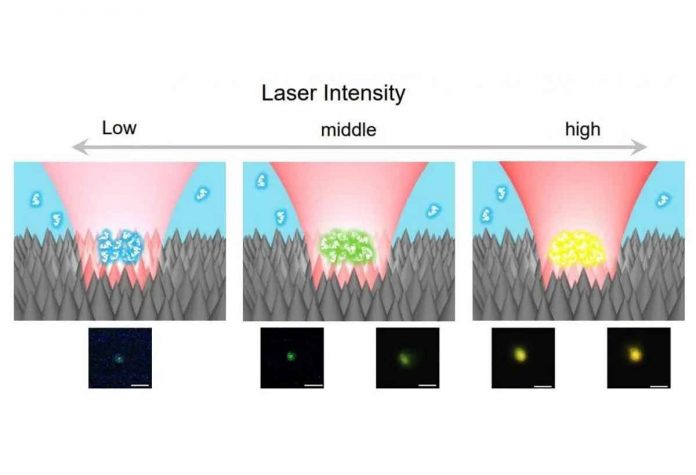One big stumbling block in the field of photonics is that of colour control. To control colour that is the wavelength of light emission, scientists would have to alter the chemical structure of the emitter or the concentration of the solvent. All of it require direct contact which limited their application.
These conditions make it impossible to change colour quickly. With “optical tweezers,” scientists developed a technology. They showed it is possible to control the luminescence colour remotely by using only the effect of light pressure.
The study has been recently published in the German international journal Angewandte Chemie.
Scientists have been conducting research on a technology. The technology can apture and manipulate nano- and micrometre-sized materials with a laser. Scientists found that when a silicon crystal with a special needle-shaped nanostructure, the optical field enhancement effect of the nanostructure trapped a perylene-modified polymer. They have explored this “optical tweezers” technology. It has caused a local concentration of the solution to increase and form an aggregate of polymers.
As the concentration of the perylene increases, it forms a dimeric excited complex called an excimer. These excimers emit fluorescence that changes colour. This depends on the degree of concentration.
Scientists investigated in prior trapping experiments that did not employ a trapping laser. They found that as the laser beam intensity increased, light pressure did as well. This caused the concentration of the polymer aggregate on the black silicon to become denser.
Though the research is still in its infancy. It relies on excited complexes and excitation energy transfer. This means potential applications in ultraviolet and near-infrared regions. Scientists are currently promoting further research in the direction of encapsulating the perylene-modified polymer solution. It can be used as a light source in micromachine components and intracellular bioimaging.

